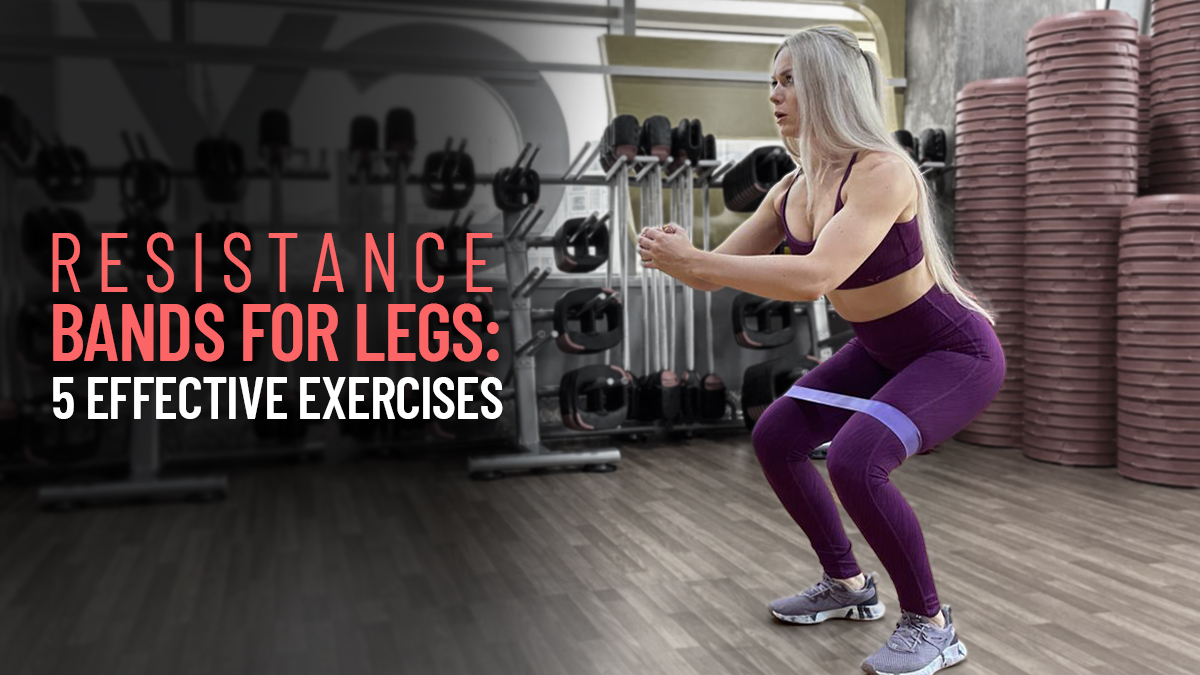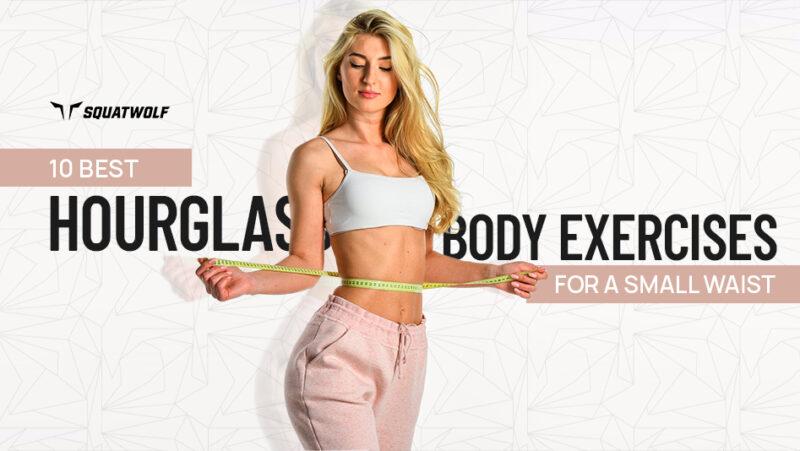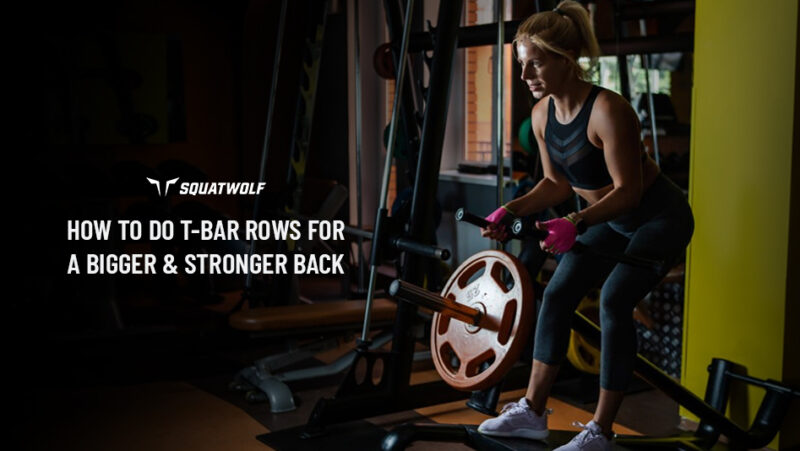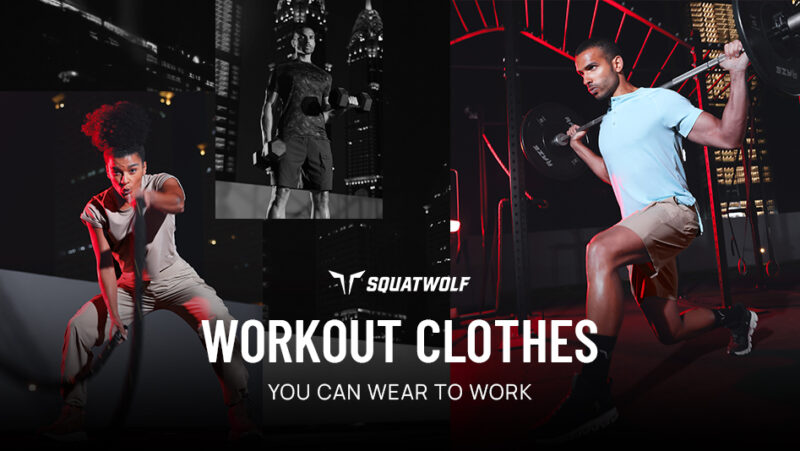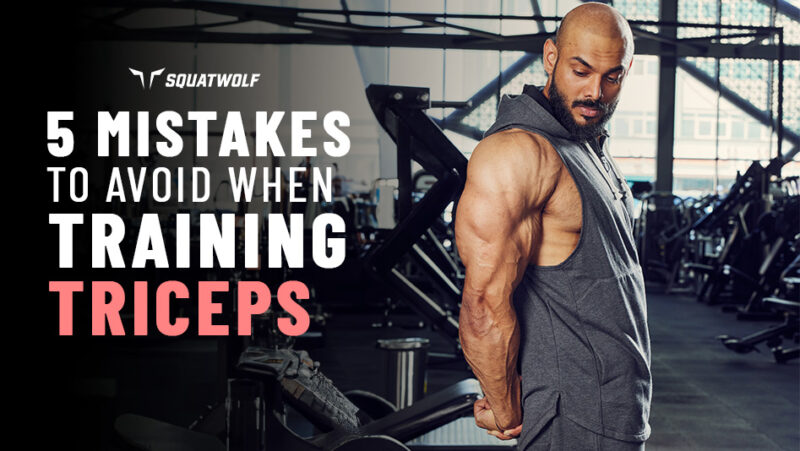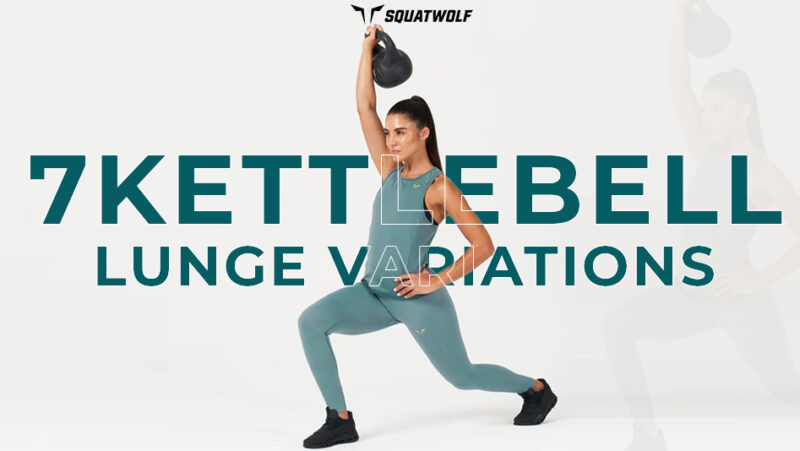If you’re looking for a way to tone your lower body, resistance band leg workouts are an excellent addition to your fitness routine. These bands are incredibly versatile, lightweight and easy to use, making them a great option for those who prefer to exercise at home or while traveling.
Resistance bands provide constant tension throughout each exercise, which leads to more muscle activation and improved strength in your glutes, hamstrings, quads, and calves. Whether you’re a beginner or an experienced athlete, banded leg workouts can help you achieve your fitness goals by adding variety and intensity to your leg routine.
Want to sculpt your legs at home? Try the lower body band workout!
Squats | Lateral Walks | Leg Press | Deadlifts | Glute Bridges | Why Resistance Bands | Key Takeaways | FAQs
5 Effective Leg Exercises With Resistance Bands
1. Banded Squats

Banded squats are a great exercise to add to your leg workout routine using resistance bands.
Here are the steps to perform banded squats:
- Place the resistance band around your thighs, just above your knees.
- Stand with your feet shoulder-width apart and your toes pointing slightly outward.
- Hold your hands out in front of you for balance.
- Lower your body into a squat position, keeping your back straight and your chest up.
- As you lower your body, push your knees outward against the resistance of the band. This will engage your glutes and activate your hip muscles.
- Continue to lower your body until your thighs are parallel to the ground or lower, making sure to keep your knees behind your toes.
- Pause for a moment at the bottom of the squat, then push through your heels and return to the starting position.
- Repeat for the desired number of repetitions.
Learn more about mastering squats with resistance bands!
2. Banded Lateral Walks

Banded lateral walks are a great exercise for targeting the muscles in your hips and glutes.
Here’s how you can perform this exercise:
- Start by placing a resistance band around your ankles. Make sure that the band is snug but not too tight.
- Stand with your feet shoulder-width apart and your knees slightly bent.
- Take a step to the side with your right foot, keeping your feet parallel to each other and your toes pointing forward.
- Follow with your left foot, bringing it to meet your right foot.
- Take another step to the side with your right foot, this time leading with your left foot to follow.
- Continue taking steps to the side for 10-12 steps, then turn around and repeat in the opposite direction.
- Keep your knees slightly bent throughout the exercise and maintain tension in the resistance band.
- Focus on keeping your upper body still and your core engaged as you perform the exercise.
- Perform 2-3 sets of 10-12 steps in each direction, with 30-60 seconds of rest between sets.
Don’t have bands? Try doing lateral lunges with or without weights!
3. Banded Leg Press

The banded leg press is a variation of the traditional leg press exercise that adds resistance to the movement.
Here’s how you can perform this exercise:
- Set up the leg press machine with a resistance band attached to the bottom of the platform and looped around the top of the machine.
- Lie down on the machine with your back flat against the pad and your feet on the platform shoulder-width apart.
- Grab the handles on either side of the machine and push the platform away from you, extending your legs fully.
- As you lower the platform, keep your knees slightly bent and the tension on the resistance band.
- Push the platform away from you again, focusing on contracting your quads and glutes.
- Repeat for 10-12 reps.
- Rest for 30-60 seconds and then perform another set.
- To increase the resistance, you can use a thicker band or double up on the bands.
Hitting the gym and got equipment around you? Learn how to do leg press correctly!
4. Banded Deadlifts

Banded deadlifts are a variation of the traditional deadlift exercise that uses resistance bands to add extra tension to the movement.
Here’s how you can perform this exercise:
- Place a resistance band on the ground and step on it with both feet, making sure that it’s positioned in the middle of your feet.
- Set up the barbell with the desired weight and position it over the middle of the resistance band.
- Stand with your feet hip-width apart, with the barbell directly in front of you.
- Grab the barbell with an overhand grip, with your hands shoulder-width apart.
- Brace your core and keep your back straight as you lift the barbell up off the ground.
- As you lift the barbell, keep tension on the resistance band by pulling it up with your feet.
- Once you’ve lifted the barbell to a standing position, slowly lower it back down to the ground while keeping tension on the band.
- Repeat for 10-12 reps.
- Rest for 30-60 seconds and then perform another set
Got weights around you? Learn how to do dumbbell deadlifts!
5. Banded Glute Bridges

Banded Glute Bridges are a great exercise to target your glutes, hamstrings, and lower back.
Here are the steps to perform the exercise:
- Place a resistance band just above your knees and lie flat on your back with your knees bent and feet flat on the ground.
- Your feet should be hip-width apart and your toes pointing forward.
- Keep your arms by your sides and palms flat on the ground.
- Push your hips up towards the ceiling, squeezing your glutes at the top of the movement.
- Hold for 1-2 seconds, then slowly lower your hips back down to the ground.
- Repeat for the desired number of reps.
- Make sure to keep tension in the resistance band throughout the exercise.
- To make the exercise more challenging, you can use a heavier resistance band or place the band around your ankles instead of your knees.
- It’s important to maintain proper form throughout the exercise. Keep your core engaged and your back flat on the ground to avoid injury.
- You can incorporate banded glute bridges into your workout routine 2-3 times per week, performing 2-3 sets of 10-15 reps.
Want a different variation? Try doing barbell hip thrusts – they work your muscles with resistance from weights!
Importance Of Using Resistance Bands For Legs
Banded booty workouts are crucial for building strong and powerful lower body muscles. Leg strength is essential for a variety of activities, including running, jumping, squatting and even standing up from a chair. Workout bands provide a simple and cost-effective way to add resistance to leg exercises, making them more challenging and effective. In fact, studies suggest these bands help you grow muscles the same way as weights or gym equipment does!
With resistance band leg and glute workouts, you can improve your balance, stability and coordination. They target the major leg muscles, including the quadriceps, hamstrings, glutes, and calves, promoting overall lower body strength and tone. They also help to prevent injuries by strengthening the muscles and joints around the knees and hips.
What makes them so sought-after is that they help to increase your flexibility and range of motion in the hips, knees, and ankles. This can lead to improved performance in sports and daily activities, as well as alleviating joint pain and stiffness.
Since these bands are versatile and easy-to-carry, you can easily incorporate them in your at-home workout routines.
Key Takeaways
Incorporating resistance bands into your leg workout routine can provide a challenging and effective way to build strength and tone your lower body. By performing exercises such as squats, lunges, leg curls, lateral band walks, and glute bridges with resistance bands, you can improve your overall fitness.
Here is a quick rundown of why resistance bands are so amazing:
- They’re great for toning your lower body in a simple yet effective manner.
- They’re convenient, portable and can be used anywhere, making them great for at-home banded workouts.
- With these bands, you always have a variety in your workouts, which keeps your muscles active and engaged.
- You can do a number of workouts including shoulder bands workouts or banded chest exercises.
- Since there are multiple levels of resistance, you can start off with lighter bands and move to heavier ones later.
- You can add resistance to your exercises without the risk of injuries that weights may pose.
- With these bands, you’ll be able to boost your recovery period, especially post-sports injury.
With consistency and dedication, resistance band workouts can help you achieve your desired fitness goals, resulting in stronger and more toned legs.
FAQs
Yes you can! You can do all kinds of workouts with resistance bands including training your legs, shoulders, chest, back, arms and even full body. In fact, you can even do specific exercises such as banded push-ups. When it comes to leg training, resistance bands work exceptionally well in targeting all the different muscles such as quads, hamstrings, calves and even saddlebags (side thigh area). In addition, bands significantly improve your balance and stability, which makes them great for mobility and post-surgery or post-injury recovery.
Yes, you can totally gain muscle with resistance bands! They keep your muscles under constant tension, keeping them active and engaged throughout the exercise. This constant tension and engagement stimulates the muscle fibers, pushing them to grow in the same way as with lifting weights. However, to truly achieve this, you need to keep varying the levels of intensity of your resistance bands, and incorporate more compound and isolated workouts. You also need to keep challenging your muscles with more intensity, more reps, less rest, more sets, more pulses or any other complexity that makes your exercise more difficult.
While resistance bands do help in muscle growth in your legs, they lead to a toned and defined appearance, making your legs look sculpted. However, the type of muscle you develop i.e. whether it’s bulky or lean significantly depends on the intensity of your workouts, their frequency, the level of resistance and most importantly, your diet. If you want to look leaner with resistance band training, you need to increase your reps with less resistance so your legs look slender and toned.
If there’s one thing you need to know about any kind of training – it is that spot reduction or reducing fat from a particular part of your body is impossible. Although resistance bands are great for toning your muscles and building definition in your legs and thighs, you need to lose your overall body fat to lose your thigh fat. By adding banded workouts to your routine, you can increase muscle mass, boost your metabolism and burn more calories. To lose your overall body fat, you need to go on a low-fat, protein-rich diet in a caloric deficit, while combining banded workouts with cardio exercises.
Continue Reading

